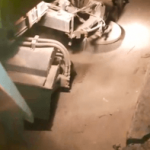
Remember when every new AI model felt like science fiction come to life? From GPT-2 to GPT-4, we watched machines go from amusing autocomplete engines to eerily humanlike assistants. But lately… things feel a little quieter. GPT-4 is still impressive, sure. But GPT-5? Still not here.
So, what’s going on? Is AI still rocketing forward — or have we quietly hit the brakes?
Let’s talk about why some of the world’s top researchers, investors, and engineers are starting to ask a once-unthinkable question: What if AI’s growth is actually slowing down?
Despite a historic decade of explosive progress, artificial intelligence may be heading into a period of diminishing returns. The biggest gains so far have come from sheer brute-force scaling — more data, more compute, bigger models. But according to new research, the well of easy wins is drying up. We’re running into physical, financial, and even environmental limits. And unless a new breakthrough emerges, we might be witnessing the beginning of a plateau.
What the Numbers Tell Us
Here’s what’s been powering AI’s rise behind the scenes: scale. Not magic, not genius — just more GPUs, more training hours, and more internet scraped into datasets.
From 2010 to 2024, the compute used to train frontier models grew by a staggering 4× to 5× every single year, according to Epoch AI. That kind of exponential growth gave us models like GPT-3 and GPT-4, each trained on 70× more compute than its predecessor.
But here’s the catch: each leap now demands exponentially more resources for smaller and smaller gains. The cost curve is steepening. The payoff is flattening.
The Walls Closing In
Let’s break down the bottlenecks we’re running into — and they’re coming from every angle:
🔌 Compute & Hardware: Building ever-larger models means building monster data centers. But advanced chips are hitting physical limits — from packaging tech to energy demands. Moore’s Law is slowing, and the chipmaking supply chain is stretched thin. Even Amazon warns that the next generation of AI could demand 1 to 5 gigawatts of power — that’s a city’s worth.
📉 Diminishing Returns: Models are still improving… but at a slower clip. OpenAI’s Ilya Sutskever recently admitted the gains from scaling have started to plateau. Toby Ord, a top AI ethicist, says we’re seeing “logarithmic returns” — every marginal improvement now takes exponentially more compute.
📚 Data is Drying Up: Most of the quality text and code on the public internet has already been gobbled up. Epoch AI estimates we could run out of usable high-quality training data by 2028. That’s just a few training cycles away.
🌍 Environmental & Economic Strain: GPT-4-level models already consume massive amounts of electricity and water for cooling. The emissions, infrastructure, and energy use are becoming hard to ignore — and might trigger future regulation.

Not Everyone Agrees
Now, before we start writing AI’s obituary, let’s be real: not everyone’s hitting the panic button.
OpenAI’s CEO Sam Altman insists there’s no “wall” in sight, and Anthropic’s Dario Amodei says these concerns come up every time — and every time, we find a way through. Many believe that clever algorithmic changes (like test-time reasoning, retrieval-augmented generation, or modular models) will keep progress humming even if compute scaling slows.
Plus, research is already shifting toward smarter, not just bigger. Think smaller specialized models, better training objectives, and inference-time problem solving — a more mature phase of the AI industry.
In fact, AWS, NVIDIA, and others are betting big on multi-modal, multi-agent, and real-time models. The future might not be one giant leap — but a thousand small steps in all directions.
So What Happens Next?
In the short term (next 3–5 years), we’ll probably still see useful progress. Models will get a bit better at math, reasoning, coding — but don’t expect another GPT-4-level leap unless someone builds an AI factory the size of New Jersey.
Looking further out, we’re at a fork in the road. One path sees new breakthroughs — smarter algorithms, synthetic data, and maybe even AGI. The other? A plateau where model improvements become marginal and costly, and companies start optimizing what we already have.
And the data seems to back both stories.
As the RAND Corporation puts it, the next phase of AI could go one of two ways: “Scaling Continues” or “Algorithms Fail to Scale”. And we just don’t know which timeline we’re living in yet.

Conclusion
So here we are — after a decade of moonshot AI milestones, the rocket’s still flying… but it’s burning more fuel, and the sky is getting thin.
Will we break through to the next frontier of intelligence? Or are we watching the AI boom start to cool?
Whatever happens, one thing’s for sure: the next chapter in this story won’t be written by bigger GPUs alone.
Stay tuned.



